|
Getting your Trinity Audio player ready...
|
Parents who would like to introduce their children to the life and times of the beloved Mexican artist Frida Kahlo (1907-1954) can look forward to a new animated feature titled Hola Frida! (a.k.a. Frida, c’est moi!). Produced by Haut et Court (France), Tobo Media (Canada) and Du Coup Animation (Canada), the 80-minute feature is directed by Karine Vézina and André Kadi. The film, which is distributed by French outfit Dandelooo Cinema, was the opening film of the 2025 New York International Children’s Film Festival, and is making its way around the world throughout the year.
We recently had the chance to chat with the film’s directors about their colorful and imaginative new take on the childhood of this important figure in the art world:

Animation Magazine: Congratulations on the success of your wonderful new movie. Can you tell us a bit about the origins of this project?
André Kadi: After working on two feature films about the incredible journey of a young Syrian girl fleeing war (Dounia), we wanted to tell another inspiring story from a child’s perspective, featuring a little girl with an extraordinary journey. This led to Frida Kahlo, who had an exceptional life, and it was very inspiring for us to talk about her youth.
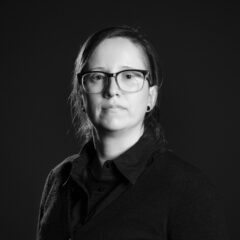
Karine Vézina: I was responsible for compositing on the two Dounia feature films. I hesitated when André asked me to co-direct the film because Frida has always been a role model and a source of inspiration for me. I was afraid our approach might be seen as just another commercial exploitation of her image, but we decided to dive in, promising ourselves to pay tribute to her as much as possible by respecting and understanding the little girl, and then the woman, that she was.
What was it about the subject matter that struck you as original and inviting for young viewers?
Kadi: The Frida phenomenon is both troubling and singular. She is both one of the world’s most famous artists (the second-most Googled after Da Vinci) and an icon of feminism and resilience, but little is known about her story, particularly her youth.
Vézina: In her letters, she talks a lot about the period when she had polio at the age of six as a founding period of her personality, but people know very little about the details.
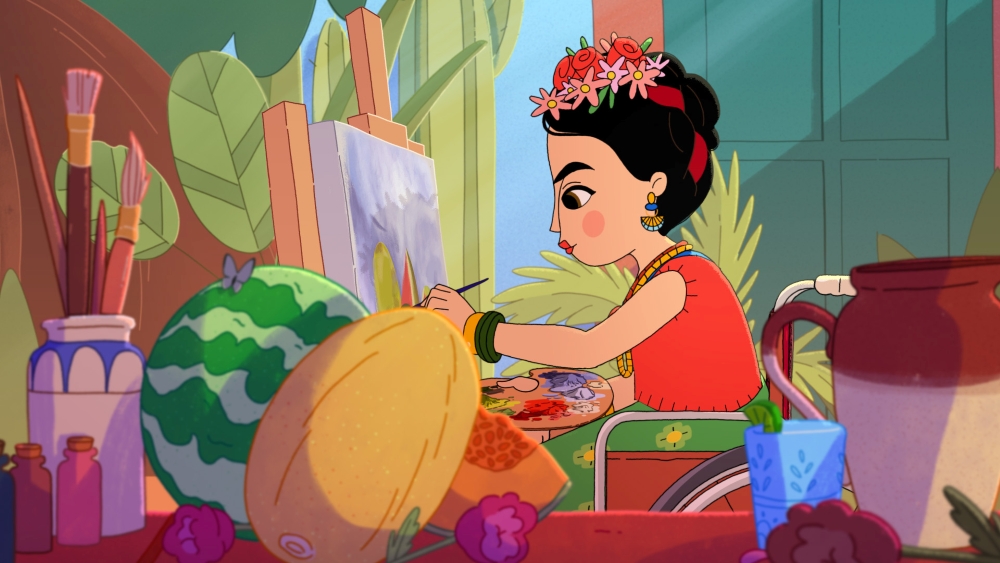
Can you discuss the visual style of the project?
Vézina: In the same way that we wanted to portray Aleppo in all its pre-bombing splendor in Dounia and the Princess of Aleppo, the challenge this time was to represent an authentic Mexico City, faithful to what it was at the beginning of the 20th century. We did a lot of research and visited Mexico City and Coyoacán at the beginning of the project to immerse ourselves in its atmosphere and light.
Kadi: We based the visual style on illustrated books by Sophie Faucher (who also co-wrote the film and voiced Matilde in the French version) and illustrated by Cara Carmina (a Mexican artist who grew up in Coyoacán). The style evolved to meet the needs of an animated film, but there were very strong, highly stylized foundations that inspired us to develop a recognizable and original film.
Where was the animation produced and how many people worked on it?
Kadi: The film was entirely produced in our studio, Du Coup Animation, which I co-own with our artistic production director, Marie-Michelle Laflamme. About 30 artists were involved in the production. We used Toon Boom Harmony for animation and compositing, Adobe Premiere for editing and Photoshop for the backgrounds/scenery.
Vézina: One of the interesting aspects was that everyone was on site. This allowed us to discuss storyboards, sets, backgrounds, animation, compositing, etc. every day, to see the film take shape and for each artist to see the impact of their work.
What was the toughest aspect of creating a movie for younger audiences about this important figure?
Vézina: The immense respect we had for Frida! We really wanted to pay tribute to her and make a film that she would have appreciated. Every detail, each object and background had to be accurate, coherent and authentic.
Kadi: We can’t really talk about challenges, because the production of the film was so enjoyable. Everyone involved, whether at Du Coup, Tobo, Haut et Court or Dandelooo, contributed ideas and insights, and we went through many versions of the script before we had the perfect balance in terms of what we wanted to tell as a story. Each person involved can talk about a detail, a scene, a character he or she had an influence on.
What kind of audience responses have you received that made a big impression on you?
Kadi: Without a doubt, the film’s reception in Mexico. We presented the Spanish-dubbed version at the Morelia Film Festival on October 25, then, on the 27th at the Cineteca de Mexico and in the courtyard of Casa Azul, in the presence of Frida’s family, and the reception was fabulous. People cried, laughed and loved the film, and we were very, very moved. The film seems to have touched both adults and children alike.
Why do you think Kahlo is such a wonderful role model and interesting character for young viewers to emulate?
Vézina: I could talk for hours about Frida. She’s a character that has fascinated me for over 20 years, both as a woman and as a painter, and while working on the film, each new encounter showed us that many women felt they had a very strong bond with her. Perhaps it’s because her letters allow readers to dive into her private life, sharing her doubts and suffering, but she remains a universal figure.
Kadi: And children too will also be able to identify with this resilient little girl who became a great woman and a greater painter — not because of or despite but with her disabilities and sufferings.
What do you hope global audiences take away from Hola Frida?
Vézina: Above all, we hope they’ll be touched by this little girl’s story, that they’ll be charmed by the vibrant and wonderful Mexico City and that they’ll sometimes think, when confronted with certain situations, “What would Frida do in this situation?”
Kadi: We also hope that, in a few years, these children will want to discover her paintings and remember the allusions and details in the film that refer to them. We couldn’t show Frida’s paintings directly because they are often too intense or explicit for children, but we planted many small seeds in her imaginary world that hint at what her works would later become.
You can find out more about the film at dandelooo.com/en/portfolio/c-hola-frida.


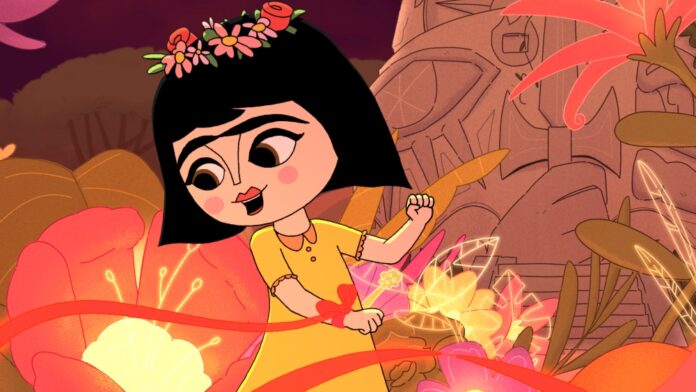
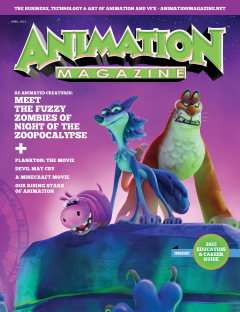



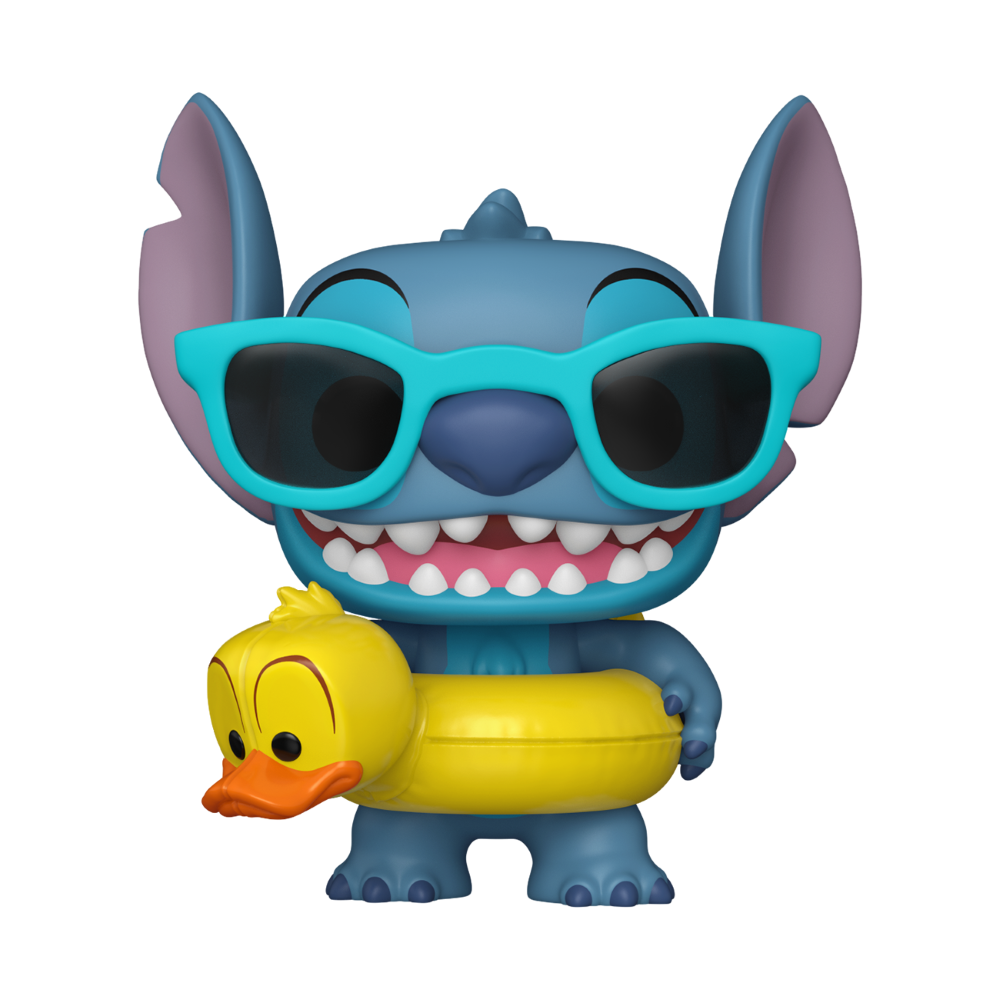 Win a Funko X Lilo & Stitch Prize Pack!
Win a Funko X Lilo & Stitch Prize Pack! 